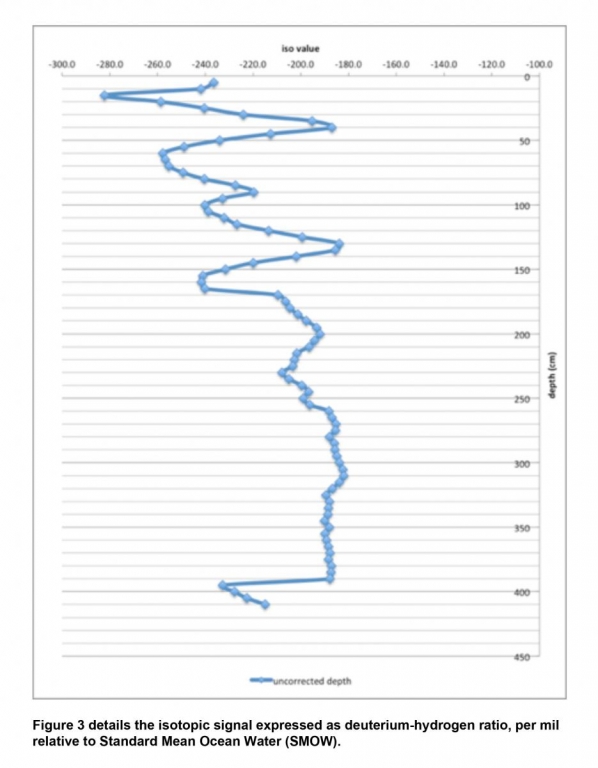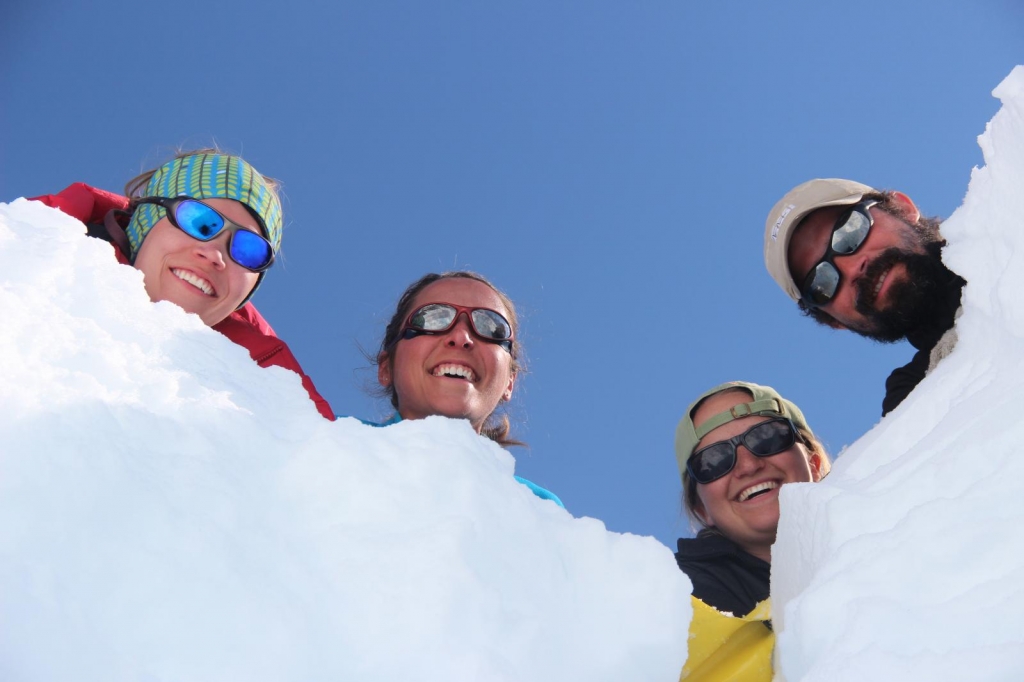
Seasonal Correlation of Air Temperature and Isotopic Composition of Snowfall in the Central Alaska Range
Kahiltna Glacier, Alaska 2012
Seasonal Correlation of Air Temperature and Isotopic Composition of Snowfall in the Central Alaska Range
2012 Field Team Members: Seth Campbell, Curtis Marston, Lyndsey Marston, Josh Plourde (University of Maine); Kristin Schild, Hazel Shapiro (Dartmouth College); Adam Toolanen (Lund University, Sweden)
Location of Field Expedition: Denali National Park and Preserve, Alaska
Dates of 2012 Expedition: May 13, 2012 – May 25, 2012
Funding Support: Dan & Betty Churchill Exploration Fund
Introduction
As a third-year undergraduate in the Earth Sciences Department at UMaine, under advisement of Professor Karl Kreutz, I applied for the 2012 Churchill Exploration Fund in April. Less than a month later my proposal, Seasonal Correlation of Air Temperature and Isotopic Composition of Snowfall in the Central Alaska Range, had been accepted, funded, and I was on a plane heading to Anchorage, Alaska with a final destination of Kahiltna Glacier, the starting point for those climbing Mt. McKinley.
Results and Discussion
Reconstructing atmospheric temperatures from snow or ice core records of water isotopic composition (ä18O and äD) is a standard practice when addressing long duration time scales (i.e., decadal or greater) but the same practice is not necessarily dependable when working with shorter time scales (i.e., days, weeks, months). Melt-induced isotopic redistribution in the snowpack is the leading cause of variability among temperature and isotope relationships on small timescales. Hence, any attempt to reconstruct past atmospheric temperatures from ice cores collected in regions experiencing seasonal melt requires a detailed, process-based examination of both local atmospheric conditions and the preserved snowpack isotopic record.
This expedition aimed to address the relationship between temperature and isotopic composition of recent annual snowfall in Denali National Park near Kahiltna Glacier (Fig. 1) during 2011-2012. To test for a relationship, high-resolution snow samples were collected from a snow pit for isotopic analysis.
An automatic weather station (AWS) was in place at Kahiltna Base camp since May2008, operating to collect a complete temperature record since. At similar sites throughout the Arctic, increasing snow-pit temperatures are accompanied by increased mean ä18O values (Moran and Marshall, 2009). Based on this and previous research at other polar and alpine sites, I hypothesized that snow ä18O snow values would positively correlated with air temperature on a seasonal timescale.
Unfortunately, due to record high levels of snow-fall during the last year, the AWS had been buried, making its sensor readings undependable and eventually shutting off due to lack of electrical power (the AWS operates via batteries charged by mounted solar panels which were also buried during the past winter season.)
Figure 3 details the deuterium-hydrogen isotopic signal expressed within the snowsamples collected at the site.
Conclusions
Due to the weather station failure, the original hypothesis presented in this paper was not able to be fully tested. Moving forward, climate reanalysis tools created and maintained by Dr. Sean Birkel, CCI, will be used to determine temperature patterns over the last year as an alternative means for deriving temperature at the site of the snow sampling pit.
Without the support from the Dan and Betty Churchill Exploration Fund, this research would not have been possible. With utmost sincerity and appreciation, I thank the Churchill Family for their support of my small research project as well as their continued support of the University of Maine’s Climate Change Institute. I’d like to thank my advisor for this project, Professor Karl J. Kreutz, as well as the University of Maine and the Climate Change Institute for assisting me with this research opportunity. Additional thanks to Dr. Sean Birkel for work with climate reanalysis tools, Seth Campbell and others present during the 2012 field season to Kahiltna Glacier for their prep work and great support in the field.
- Kristin Schild, Lyndsey Marston, Hazel Shapiro, Seth Campbell




